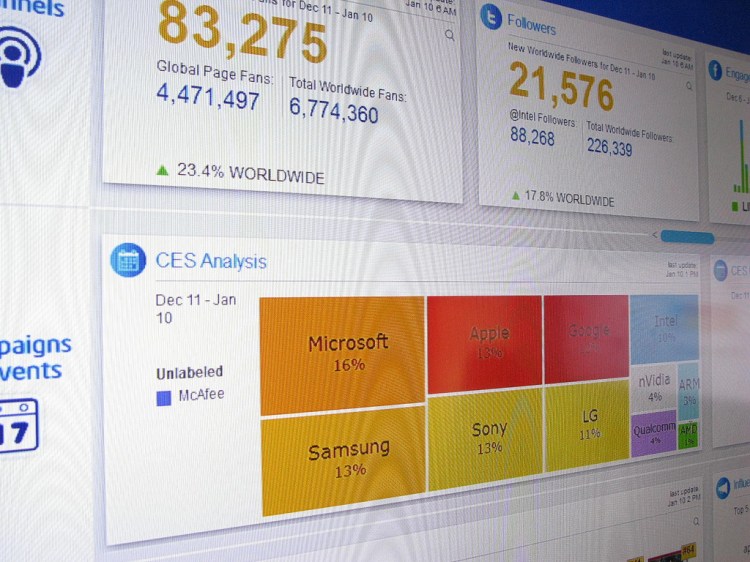 Rado Kotorov is the chief innovation officer for BI and analytics provider Information Builders.
Rado Kotorov is the chief innovation officer for BI and analytics provider Information Builders.
VP Marketing: “Siri, should I open this email?”
Siri: “Don’t. Your boss sounds very angry. And, by the way, the tone of the email that you are writing to the product management team is very negative. Please change it.”
Many people delegate more and more to Siri (the electronic genie ‘in’ the iPhone) – from dialing phone numbers and finding directions, to taking dictation for SMS and emails. What if Siri could help us modulate the emotional tone of our messages? Would it make the world a better place with less conflict and argument, or would it leave piles of unread messages?
Perhaps, but to be able to help in this aspect Siri will have to learn to do sentiment analysis: read text and determine its emotional charge.
Today, there is a lot of hype and buzz about sentiment analysis even without Siri’s involvement. Like any new technology it has its advocates and its skeptics. And since the technology is in the early stages of evolution the skeptics can find plenty of failures and the proponents plenty of hope.
Let us start with the skeptics.
Emotions are perceived as uniquely human and difficult to read even by human beings. The Spanish philosopher Unamuno believed that emotions distinguished humans from the animal world — he had never seen a cat crying! So how can a machine accurately predict the emotions in messages?
The problem is further exacerbated by the subtleties of language and expressions, by unwritten but implied insinuations in short messages, by the symbols and abbreviations that constantly change and evolve in social media posts, and by the fact that messages can express more than one emotion. All of these are perfectly valid concerns and problems that do not have definite solutions today.
The ‘mad’ scientists argue that these are minor issues raised by those uninitiated in the arts of semantic analysis. And they have stacks of papers, journals, books, examples, programs, and so on to show you how machines are as smart as people in understanding and assessing written and spoken language. But is it so? Didn’t HP just write off $8 billion from the acquisition of Autonomy — the company that pioneered semantic search and was promising to be able to read and understand text better than lawyers do?
Isn’t this an admission that we are not quite there yet?
I think that both sides are wrong and a more pragmatic approach that recognizes both the needs and the limitations is more beneficial. The driver for sentiment analysis is early detection of warning signs and opportunities. Detecting that a customer is getting very frustrated with customer service can be used to prevent customer churn, and detecting early that negative posts have the potential of going viral can trigger a counter action to prevent severe reputational damage.
The reason why we are seeking the help of machines is because the volume of online communications is so large that organizations cannot put enough employees to sift through all of them. Naturally when there is a need, people will be looking for solutions … and hype and skepticism are corollaries to every search for a solution.
So what do I think is the practical solution given these limitations?
Industry-wide, we know that sentiment scores can be assigned to about 40% to 50% of messages. Essentially, sentiment analysis allows us to classify accurately messages at both ends of the bell curve, the extremely positive and the extremely negative. Given the human condition, very angry messages have simply a very angry tone. And the focus of the messages is directed entirely to the expression of the strong frustration. The same is true for the very happy messages. So we can safely claim that the technology will help us to filter the messages at both tails of the bell curve, and this is not a small gain.
Now let us figure how to further augment it, so that we can gain more insight. What if we pair sentiment analysis with search technologies? In other words, we assign sentiment to a message, but also index all the messages in a search index. Then, once we find an angry message, search can show us related messages. It is true that those messages will be related by content, but even an inexperienced user can quickly sift through similar messages and pick up the ones that are of interest.
Let us take it one step further.
Search already comes packed with sophisticated analyzers that can extract words from text. Those words and their frequencies can be displayed in various visualizations — tag clouds, lexical diversity graphs, streaming graphs. With this enhancement a user can filter the messages on sentiment (detecting the most angry ones), see the related messages (using search), analyze the aggregate word distributions in the related messages (using text graphs) and drill down on the graphs to further filter the messages. At the end they can read the few remaining messages and know exactly both the sentiment and the content.
The combination of the three technologies allows analysis in fractions of a second to detect cases that need attention. And this is operationally invaluable without being outrageously esoteric.
Siri, can you save me some time?
photo credit: IntelFreePress via photopin cc
VentureBeat's mission is to be a digital town square for technical decision-makers to gain knowledge about transformative enterprise technology and transact. Learn More

